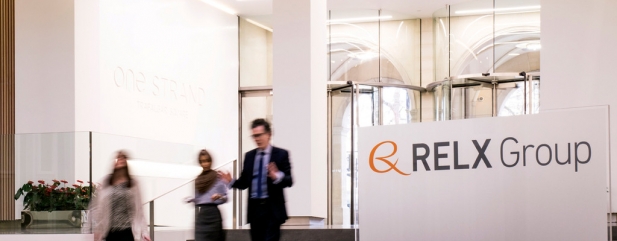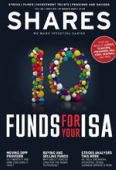Archived article
Please note that tax, investment, pension and ISA rules can change and the information and any views contained in this article may now be inaccurate.
Rare chance to buy FTSE 100 superstar RELX at a discount

Data analytics, events and publishing business RELX (REL) is down 14% year-to-date as a reversal in the dollar strength which had boosted earnings and a dispute over the pricing of scientific journals have dogged the shares.
Sentiment is starting to turn and the stock is coming off its 2018 lows. We believe there is further upside to come, so buy now.
The shares trade on a forward price to earnings (PE) ratio of 16.6 times compared with 19-times average over the last decade according to SharePad.
GET IN QUICK
Based on our previous experience of covering the stock, this valuation anomaly is unlikely to persist indefinitely.
We wrote positively on RELX, previously called Reed Elsevier, in June 2015 when the company was trading on a PE of 17.1 times after a period of underperformance. Within 12 months the stock was trading 20% higher.
Is anything different this time? The threat to its scientific, technical & medical (STM) arm from a newly-formed consortium of German universities complaining about pricing looks modest. Investment bank Berenberg reckons this business accounts for 0.5% of divisional revenue.
There is always a danger this is a ‘canary in the coalmine’ warning of the more aggressive pursuit of open access – the principle of giving away publicly-funded peer-reviewed research for free.
However, most global governments have adopted policies which are unlikely to be too disruptive to subscription-based publishers like RELX.
Investors should keep tabs on this situation but there appears little reason for panic at the moment.
SOLID GROWTH NUMBERS
The company was bullish on the STM division in an otherwise typically reliable set of full year results on 15 February.
The 2017 figures revealed profit up 6% and revenue up 4%, in line with recent trends. The dividend was lifted by 10% to 39.4p, underpinning robust guidance for another year of growth in 2018.
An announced change from a dual share structure to one single PLC share listed in London and Amsterdam also simplifies and improves the investment case.
Since taking over in 2009, chief executive Erik Engstrom has helped shift from print to digital, invested in its analytics skill-set and moved into faster-growing geographies.
The business is increasingly aligned with the big data trend given its ability to absorb large quantities of information and distil this data into information which can help its customers operate more efficiently.
The projects it completes often account for just 1% of customers’ total cost base but can have a significant and positive impact on the economics of the remaining 99%, says RELX.
Important information:
These articles are provided by Shares magazine which is published by AJ Bell Media, a part of AJ Bell. Shares is not written by AJ Bell.
Shares is provided for your general information and use and is not a personal recommendation to invest. It is not intended to be relied upon by you in making or not making any investment decisions. The investments referred to in these articles will not be suitable for all investors. If in doubt please seek appropriate independent financial advice.
Investors acting on the information in these articles do so at their own risk and AJ Bell Media and its staff do not accept liability for losses suffered by investors as a result of their investment decisions.
Issue contents
Big News
- Virgin Money results beat forecasts but doubts over ability to perform
- Lithium miner Bacanora prepares for substantial fundraise
- Greggs’ nourishing performance
- How did investors react to the latest batch of FTSE 100 results?
- Will there be a bidding war for Sky?
- RIT Capital Partners reveals stellar gains since 1988’s flotation
- Triple Point eyes listing upgrade and £200m new cash
- IntegraFin to be valued at c£650m at IPO
- Threads expert Coats impresses on margins and profit guidance
- Productivity growth hits its highest rate since the financial crisis
 magazine
magazine









